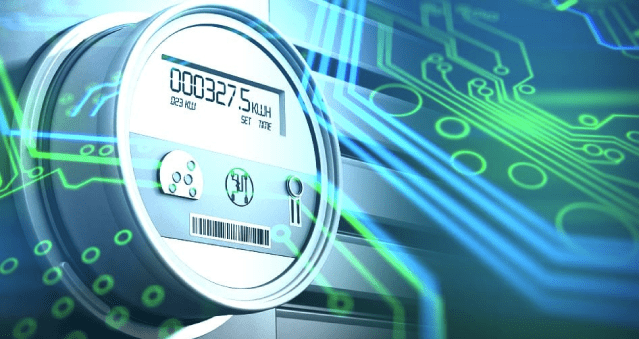While the terms are typically used interchangeably, there are a few subtle differences between usage-based billing and metered billing – the most significant being in how charges are calculated. Usage-based billing calculates charges based on how much of a product or service is used. Whereas metered billing uses the amount of time customers use the product or service.
With the ability to bill customers (B2C and B2B) for usage only, whether that’s clicks, API calls, downloads, seats, text messages sent, minutes used, bandwidth used, product usage, etc., and enabling companies to attract a larger customer base by removing up-front financial purchasing barriers – what’s not to love, and why aren’t all businesses using this pricing strategy?
Usage-Based Billing versus Metered Billing: The Differences and Similarities
Commonly used by software-as-a-service (SaaS), cloud hosting services, and online storage solutions companies, usage-based billing charges customers based on how much of the resources are used. For instance, Slack’s Pro plan bills based on the number of users – $7.25 per active user/per month when paid annually or $8.75 per active user/per month when paid monthly.
Metered billing predominantly uses time-based metrics to calculate charges and is typically used by companies that provide long-term subscriptions. Consider mobile phone organizations, streaming services, utility companies, and internet access businesses, as well as ride share and taxi companies. These telecommunications companies charge customers based on the number of mobile minutes consumed during a billing period.
When it comes to similarities, both billing strategies calculate product or services consumption (amount and/or time). Given that the similarities far outweigh the differences, for the purpose of this blog we will use both terms – usage and metered – interchangeably.
The Benefits of Metered Billing
On the rise for several years, usage-based billing continues its upwards trajectory. In fact, in 2022 61% of software-as-a-service (SaaS) companies used some form of metered billing and with good reason. When it comes to advantages, this monetization model doesn’t disappoint.
From a customer perspective, by eliminating upfront costs, metered billing offers a lower barrier to entry, is cost-efficient (since customers pay for only what they consume), and provides the flexibility for customers to choose only the features and functionality they require.
Benefits to the business are plentiful and include:
- The agility and flexibility to quickly respond to changing business and customer needs.
- Improves the product development process by using the insights gained from customer usage patterns and behaviors to create products/services that are most likely to be adopted by a large customer base.
- Improves customer satisfaction, customer retention, and customer lifetime value (CLV).
- Enables better alignment of price to the value of the products and services.
- Increases target market by providing startups and small and medium-sized (SMBs) with cost-effective access to high-quality products and services.
- Shortens the purchasing cycle by eliminating up-front investments.
- Provides the ability to increase or decrease pricing based on supply and demand, peak/off seasons, etc.
- Reduces revenue leakage by optimizing product and service usage.
- Allows for fast and easy experimentation and testing of recurring revenue and metered-based pricing combinations.
- Increases cross-sell and upsell opportunities by leveraging the data collected to provide targeted recommendations and promotions.
- Delivers a competitive advantage by offering more tailored and flexible pricing models to create differentiated packages and bundles.
Although metered billing delivers countless benefits, it does come with a few downsides.
Overcome Metered Billing Pitfalls and Capture Market Opportunities
While metered billing provides benefits to customers and businesses alike, there are a few downsides to this pricing model. However, with challenges comes opportunities. With a little effort and a few changes, you can be on track to capture market opportunities and rise above the competition.
1) Customer Responsiveness
A key benefit to usage-based pricing is in the ability to gain a deeper understanding of your customers and their behaviors. With these insights you’re in a better position to know usage patterns and market trends, as well as anticipate the current and future needs of your customers. For instance, let’s assume that your customers aren’t taking advantage of new features and functionality – which is negatively affecting your bottom line.
How to mitigate
The first step is to determine the reason(s) customers aren’t purchasing the features and functionality. Some common reasons include cost, undesirable features/functionality, and lack of understanding how the features/functionality can be beneficial. Let’s tackle each one individually.
- Cost: revisit how you determined the pricing, compare it to similar features/functionality offered by your competitors, and adjust the price for wider market appeal
- Undesirable features/functionality: revisit the reasons you developed these add-ons, speak with your salesforce to gain a better understanding of what your customers require/desire, and if necessary modify the features/functionality to better meet customer needs
- Lack of understanding: implement educational processes like webinars, blogs, videos, etc.
2) Affordability
Even if you have the best products/services on the market, if your target market can’t afford them or believe they are overpriced, you’re risking customer dissatisfaction and churn, which can result in poor customer satisfaction scores (CSAT) or net promoter scores (NPS).
How to mitigate
Inherent to the usage-based billing pricing model is sticker shock. To avoid this risk:
- Be transparent about costs
- Offer a variety of pricing tiers
- Create spending controls
- Put caps on spending limits
- Inform customers when they are about to be charged more than usual
- Revisit your pricing models frequently
3) Obscure metrics
Let’s face it, not all metrics are easily understood, especially if you’re selling to an international customer base. Will your U.S customers understand the value of kilograms or meters? By the same token, does anyone really know what a kilowatt-hour truly is?
How to mitigate
Be sure to choose the right usage metric, one that is easily understood by your target audience. A TechCrunch article highlights 5 criteria in determining the right usage metric.
- Value-based: aligns with how customers derive value from the products or services and how they view success
- Flexible: customers should be able to choose and pay for the exact scope of usage
- Scalable: the metric should have the ability to steadily grow over time
- Predictable: customers should be able to reasonably predict their usage
- Feasible: you should be able to monitor, administer, and police usage based on the metric
4) Commitment
Unlike pricing models that lock customers in for a period of time such as annual contracts, usage-based pricing doesn’t always include upfront commitments, putting you at risk for customer churn.
How to mitigate
Improve customer stickiness by delivering exceptional customer experiences and give sales reps and customer service agents the authority to provide discounts and special offers to at-risk customers.
5) Unpredictable revenue
Inherent to metered billing is in providing customers with the ability to increase or decrease usage at will, which makes it difficult to forecast future revenue.
How to mitigate
Many times, a decrease in usage by some customers is offset by an increase in usage by other customers. However, to improve revenue forecasting, it’s important to have a contingency plan in place, as well as having staff to monitor and report fluctuations.
6) Billing and payment infrastructure
Depending on your existing billing and payment platforms, implementing metered-based billing may require changes to the systems already in place.
How to mitigate
In addition to supporting usage-based billing, the billing and payment platforms need to seamlessly integrate with critical front- and back-office systems to create a fully integrated financial ecosystem.
Want to dig a bit deeper into usage-based billing? Check out our blog – A Comprehensive Guide About Usage-Based Billing Software – which covers the types of usage-based pricing models, their advantages and disadvantages, how to implement usage-based billing software, and much more.
Is Metered Billing Right for Your Company?
While metered billing offers an abundance of benefits and market opportunities, it isn’t the right monetization platform for all businesses, products or services. If you’re considering usage-based billing, check out the following questions to determine if this pricing model is right for you.
- Can you break usage down into easily explained and understood units?
- Can you determine usage metrics that easily align to the value of your products/services (e.g., value metrics – the measurable value that your products/services provide to customers)?
- Can you easily and accurately track and measure usage?
- Do your costs increase or decrease based on the usage of your products?
- Can you track and recognize fluctuating revenue?
If you answered yes to most of these questions, then metered billing may be right for you. Alternatively, if you sell complex products and services or find it challenging to assign the right value metric to usage then a different billing model would be more beneficial.
Turn Raw Data into Revenue
One of the biggest challenges companies face in capitalizing on metered billing is in the ability to accurately capture and monetize usage. Without the ability to map and monetize a variety of data from numerous sources, organizations find themselves facing significant revenue leakage.
One of the most important but often overlooked steps in the billing process, mediation, collects, translates and monetizes data. It enables you to normalize the data and then route it to your billing system for billing, invoicing, and reporting. Without this key component, you won’t be able to determine who the usage events belong to, what products were used, the quantity of services used, or when the services were used.
Maximize Revenue Potential with Metered Billing
Are you tired of manually tracking and calculating usage? Is the manual effort resulting in errors and revenue loss? Does the thought of integrating a third-party mediation platform sound cumbersome, time consuming, and cost prohibitive?
When you combine billing with built-in mediation, you can quickly take advantage of the market opportunities that only usage-based pricing offers. With a mediation engine built into the billing platform, BillingPlatform can help you turn raw data into revenue and seize the market opportunities that only metered billing can deliver. With a mediation engine built in, BillingPlatform can help you turn your raw data into revenue.



